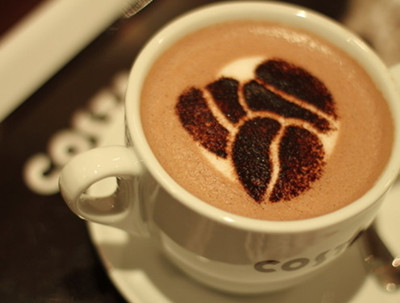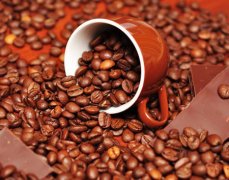The most beautiful coffee bean in the world-Hawaiian Kona Coffee is unique
Hawaii Kona coffee beans are the most beautiful coffee beans in the world. They are unusually full and shiny. Kona coffee beans are evenly shaped, with intense acidity and sweetness. They taste moist and smooth. Growing on a volcano, Hawaii's unique volcanic climate creates Kona coffee's unique aroma, and there is a high density of artificial cultivation, so each bean can be said to be spoiled "ladylike", beautiful, plump and baby-like skin.

Kona coffee tastes fresh, crisp, medium-bodied, slightly sour, with a rich aroma and a long finish. Best of all, Kona coffee has a blend of wine, fruit and spice aromas that are as charming as the colorful hues of this volcanic archipelago. The taste of Kona coffee generally falls into the milder category, so that some people think this mildness is synonymous with bland, and Kona is too refreshing and simple. But if you're one of those people who wants to get into the mood with the aroma of coffee before you taste it, Kona is the coffee for you, because it's not as mellow as Indonesian coffee, not as strong as African coffee, not as rough as Central and South American coffee. Kona coffee is like a girl walking in the Hawaiian sun and breeze, fresh and natural, not warm.
Real Hawaiian Kona coffee gives you a unique pleasure and leads you slowly into the transcendent state of coffee tasting. And this is all from the oldest Arabica coffee tree.
Hawaii is the only state in the United States to grow coffee, which is grown on the five main islands of the Hawaiian archipelago: Oahu, Hawaii, Maui, Kauai and Mauroka. Coffee produced on different islands also has its own characteristics. Coffee from Kauai is soft and smooth, coffee from Mauroka is high in alcohol and low in acidity, and coffee from Maui is medium in acidity but has the strongest flavor. Hawaiians are proud of their 100% indigenous Arabica coffee beans.
Hawaii Island is the largest island in the Hawaiian Islands, so it is also called the Big Island. Kona coffee is produced in the west and south of Kona area of Hawaii Island. Coffee trees are spread all over the slopes of Hualalai and Mauna Loa. The altitude here is 150 meters to 750 meters, which is suitable for coffee growth.
The excellent quality of Kona coffee is due to its location and climate. Coffee trees grow on the slopes of volcanoes, and their geographical location ensures the altitude required for coffee growth; the dark volcanic ash soil provides the minerals needed for coffee growth; the climatic conditions are very suitable, and the sun gently passes through the air filled with moisture in the morning, and in the afternoon, the mountains become more humid and foggy, and the clouds in the air are natural umbrellas for coffee trees, and at night they become clear and cool, but no frost falls. Natural conditions have allowed the average yield of Kona coffee to be very high, reaching 2240 kilograms per hectare, compared with 600 to 900 kilograms per hectare in Latin America.
Important Notice :
前街咖啡 FrontStreet Coffee has moved to new addredd:
FrontStreet Coffee Address: 315,Donghua East Road,GuangZhou
Tel:020 38364473
- Prev

Introduction of civet boutique coffee the unique taste of civet coffee the flavor of civet coffee
Civet Coffee (Kopi Luwak), native to Indonesia. It is one of the most expensive coffee in the world, with a price of several hundred dollars per pound. It is extracted from the feces of the civet and processed. The civet eats the ripe coffee fruit and is excreted through the digestive system. After it is fermented through the stomach, the coffee produced has a special taste and has become a hot spot in the international market.
- Next

Rwanda Boutique Coffee Flavors Introduction Rwanda Boutique Coffee Flavors Features Rwanda Boutique Coffee
Since the 1920s, Arabica coffee grown in Rwanda has been known worldwide for its distinctive fruity sweetness and intense grassy aroma. In recent years, the Rwandan government has taken active measures to vigorously promote coffee production, establish coffee production cooperatives in various places, and provide technical guidance and financial support to farmers, so that coffee production has developed greatly. Rwanda coffee
Related
- Detailed explanation of Jadeite planting Land in Panamanian Jadeite Manor introduction to the grading system of Jadeite competitive bidding, Red bid, Green bid and Rose Summer
- Story of Coffee planting in Brenka region of Costa Rica Stonehenge Manor anaerobic heavy honey treatment of flavor mouth
- What's on the barrel of Blue Mountain Coffee beans?
- Can American coffee also pull flowers? How to use hot American style to pull out a good-looking pattern?
- Can you make a cold extract with coffee beans? What is the right proportion for cold-extracted coffee formula?
- Indonesian PWN Gold Mandrine Coffee Origin Features Flavor How to Chong? Mandolin coffee is American.
- A brief introduction to the flavor characteristics of Brazilian yellow bourbon coffee beans
- What is the effect of different water quality on the flavor of cold-extracted coffee? What kind of water is best for brewing coffee?
- Why do you think of Rose Summer whenever you mention Panamanian coffee?
- Introduction to the characteristics of authentic blue mountain coffee bean producing areas? What is the CIB Coffee Authority in Jamaica?

